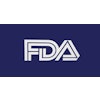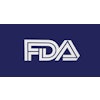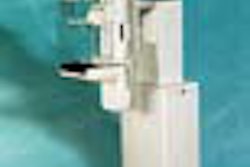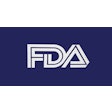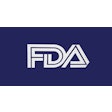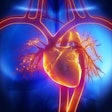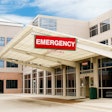If the introduction of diagnosis-related groups (DRGs) in the 1980s caused hospital administrators to cringe, the launch of 451 new ambulatory payment classifications (APCs) could lead to curled hair and frayed nerves as CFOs struggle to cope with potentially serious reimbursement losses in outpatient diagnostic imaging.
The Health Care Financing Administration (HCFA) published the final regulation implementing a new prospective payment system for hospital outpatient departments in the April 7, 2000 issue of the Federal Register. The new system will take effect July 1, 2000. Subsequent rate adjustments are possible within three years.
According to Cherrill Farnsworth, executive director of the National Coalition for Quality Diagnostic Imaging Services (NCQDIS), the problem stems as much from the APC classifications for imaging procedures as it does from the unsupportable reimbursement rates themselves.
"It's important to understand that APCs are like DRGs for outpatient departments. Instead of being reimbursed on a fee-for-service basis, facilities will now be reimbursed on a flat-fee basis for CT, MRI, and ultrasound," she said. "Regardless of whether there were extra sequences or whether contrast media was used, the hospital will receive the same amount. The new system simply does not regard contrast separately."
For her part, Nancy-Ann DeParle, HCFA administrator, said she expects the new rules, which are part of the Balanced Budget Act of 1997, to help Medicare "... reduce copayments for hospital outpatient services that are being used more frequently by elderly and disabled Americans. The new system gives hospitals changed incentives to become more efficient, and will result in more consistent payments across hospitals."
However, what HCFA considers "changed incentives" strikes contrast media manufacturers, radiologists, and hospital executives as a serious challenge. Because there are no APC codes for CT, MRI, and ultrasound studies with contrast, reimbursement will cover only part of the actual costs. Departments that perform contrast-enhanced studies will essentially be penalized unless the regulation is further modified -- which is Farnsworth's goal.
Curtailing access?There is concern in some imaging industry segments that the new regulations could backfire, and that access to outpatient diagnostic imaging services for Medicare beneficiaries could be curtailed should hospitals find it fiscally impossible to continue operations.
"Radiology will take a 30% hit under the new regulations, because HCFA didn't evaluate the radiology costs accurately and refused to regard contrast media separately," Farnsworth warned. "I don't think anyone was attacking radiology or doing anything malicious. But it will take a lot of work to get this changed."
If there is a silver lining to the government's latest assault on reimbursement, it lies in the scheme's narrow focus. APCs will apply only to hospital-based outpatient reimbursement -- that is, facilities owned and operated on a hospital's premises such as physician office buildings and on-site centers. Freestanding imaging centers not owned or managed by hospitals will be unaffected. Indeed, they will be reimbursed at a higher rate than their hospital outpatient counterparts.
According to an NCQDIS analysis, the APC technical component payment rate for all MRI exams will be $338.87, while the national unadjusted coinsurance rate is $257.39. This means that on average, Medicare will pay only about $113.48 for an MRI, with or without the use of contrast. The APC for all CT procedures will be $237.10, and the national unadjusted coinsurance is $179.39, meaning that Medicare will pay approximately $57.71 for a CT, with or without contrast. Ultrasound will fare no better, with nearly all studies being reimbursed at $86.79, while the national unadjusted coinsurance rate sits at $57.35, with or without contrast. Moreover, magnetic resonance angiography (MRA) is lumped into the same APC as MRI procedures.
In comparison, the technical component allowance for a brain MRI without contrast in a freestanding facility rose from $421 in 1999 to $437 this year. The same MRI study with contrast went from $505 to $524. The technical component reimbursement for a chest CT without contrast is now $231 -- $276 with contrast.
Restructuring ahead?Because the new system aims directly at hospital-owned and operated imaging facilities, and because reimbursement rates are higher for freestanding facilities, Farnsworth and others predict a wave of re-evaluation and reorganization during the three-year "transition" period that HCFA has promised as partial insulation against expected reimbursement shortfalls.
NCQDIS experts believe that many hospitals are likely to re-evaluate the organization and operation of their diagnostic imaging services in light of the new rates, in order to determine whether they should convert their hospital-based diagnostic imaging services to freestanding status.
"I think that more likely than not, hospitals will restructure their outpatient radiology departments," Farnsworth said. "There will be a slowdown, if not a halt, to building new hospital-based outpatient radiology facilities."
Farnsworth said she advises hospital executives, radiology managers, and administrators not to panic as July 1 approaches. For now, she said, they should study the regulation carefully and decide how they can best reorganize their operations to avoid falling within APC classifications until they are changed to reflect the complexity of each type of exam and the cost of contrast media.
Hospitals that decide to restructure their outpatient imaging services should also be aware that the April 7 HCFA regulations implement new requirements regarding whether an entity is eligible to be considered "provider-based" for Medicare payment purposes. Under these regulations, a hospital will be required to request an official determination no later than October 10, 2000, stating that it complies with the new requirements for "provider-based" status.
Farnsworth said she tells radiologists and hospital leaders that the new regulation is "nothing to wring your hands about. Just do your homework, make sure you've read and studied, and get this taken care of, because it can be done. You need to know what you're doing and make sure that you make these moves in a timely manner."
The NCQDIS director also said "where there's angst, there's opportunity," a suggestion that the new payment system may represent an enormous entrepreneurial opportunity for freestanding imaging centers, as well as the specialty chains that own and operate multiple freestanding sites. The prospective payment regulations could result in new arrangements between hospitals and independent facilities.
"I think we're also going to see a new round of innovation with contrast media manufacturers and medical device-makers," Farnsworth said, "because if you are a new drug or procedure that could not have been billed before 1996, you are exempt from the APCs." Thus, contrast agents and procedures approved since 1996 can be reimbursed as they are currently. Approved products in use before 1996 -- the majority of agents -- will fall under the new rules. One caveat: HCFA has historically not recognized contrast media as drugs within the context of the Medicare Act.
Another possible cause for optimism lies in HCFA's acknowledgment that the current practice expense relative value units used to calculate the technical components are "interim," and thus subject to further data collection and analysis. The government intended for reimbursement to be tied to practice costs, in effect more fairly distributing payment among the respective medical specialties to maintain budget neutrality. However, industry experts feel that radiology may have failed to sufficiently impress HCFA with the nature of practice costs unique to diagnostic imaging, such as shielding, electrical requirements, and the use of contrast media.
"The good news is that the radiology piece (of the new regulation) is so bad that it must be fixed," Farnsworth said. "If it isn't fixed, my message to HCFA is that there won't be access to hospital-based outpatient radiology for Medicare patients."
By Sheldon M. SternAuntMinnie.com contributing writer
April 27, 2000
Let AuntMinnie.com know what you think about this story.

